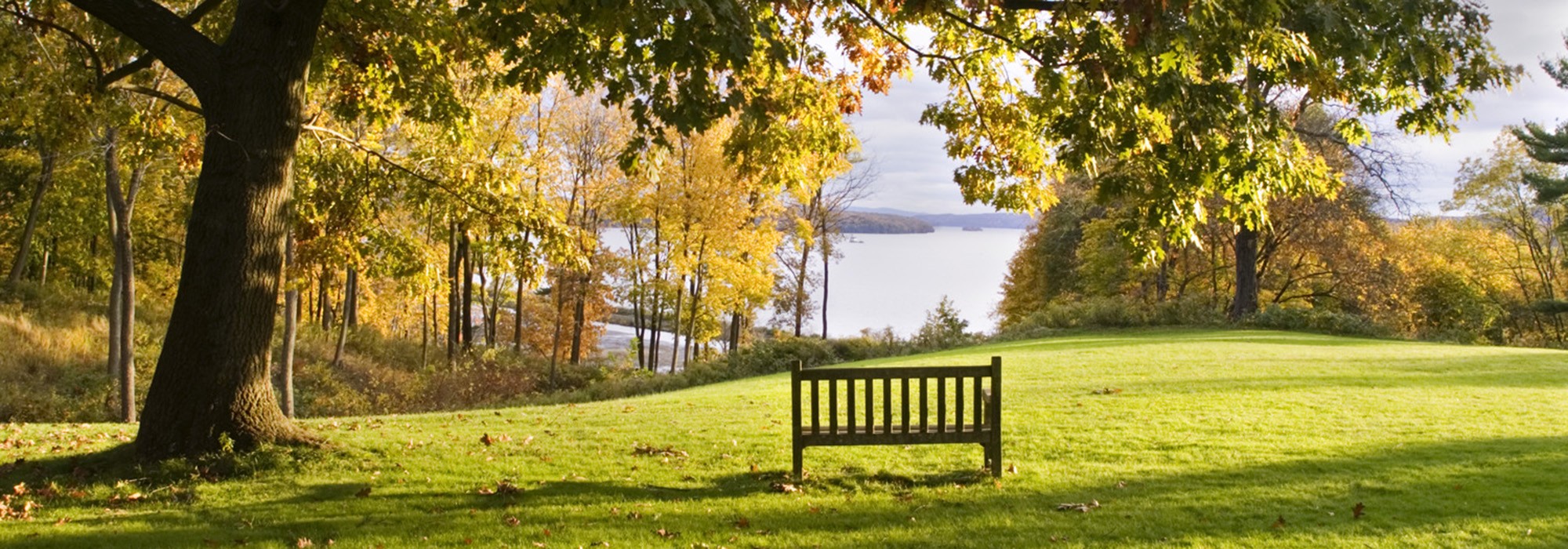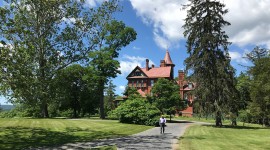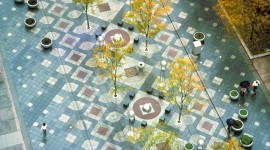Wilderstein
Designed by: Vaux and Company
Wilderstein, a 40-acre estate south of the Village of Rhinebeck, New York, sits within a 36-mile district of stately homes that line the upper east bank of the Hudson River. The estate’s designed landscape is the result of a fully implemented 1891 Vaux and Company plan, which effectively melds the picturesque house, its dramatic terrain, and its extraordinary scenic views. Today, Wilderstein is noted for its role in the aesthetic, social, and ecological history of the Hudson Valley, its high level of significance and integrity, and its association with Margaret (Daisy) Lynch Suckley, close friend and companion of Franklin Delano Roosevelt. However, the estate continues to face major challenges, including erosion on its steep, south-facing slope, costly damage to drainage culverts, and invasive vegetation management.
History
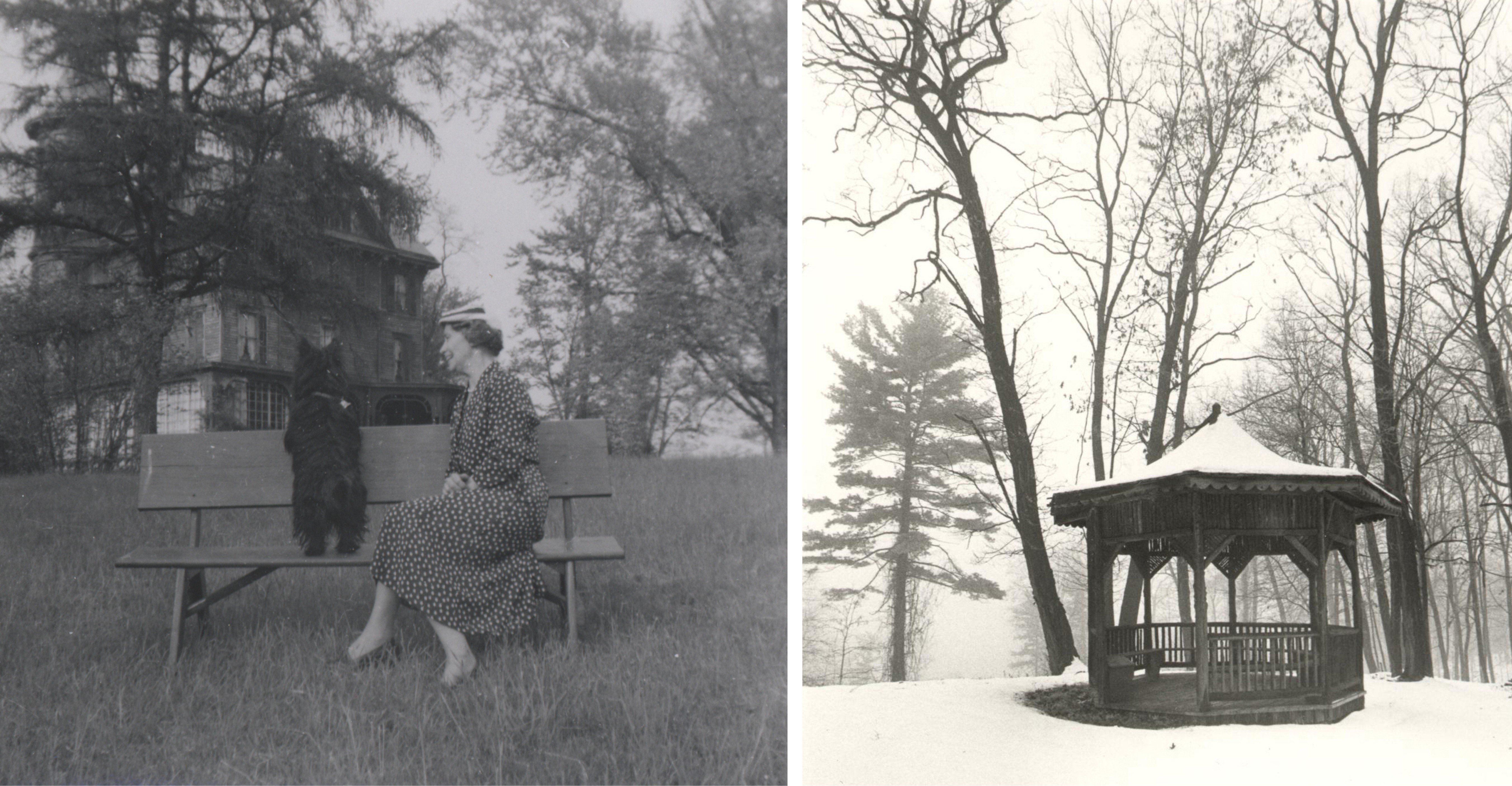
The site that would become Wilderstein was originally part of Wildercliff, a neighboring estate that had been part of an even more extensive 17th century Dutch-era manor along the upper east bank of the Hudson River. The site was maintained by sheep grazing prior to 1850, and in 1852 the owner sold a portion of the parcel to Thomas Holy Suckley and Catharine Murray Bowne Suckley. Thanks to a generous family inheritance, Suckley pursued philanthropy, donating generously to the Children’s Aid Society, the American Seaman’s Friend Society, and Methodist causes. The couple commissioned John Warren Ritch to construct an Italianate villa for their new home and had a modest landscape of trees and lawn installed.
Upon Suckley’s death in 1888, his youngest and only surviving child, Robert, inherited both the family fortune and Wilderstein. Prior to moving into Wilderstein, Robert and his wife Elizabeth Philips Montgomery undertook extensive renovations, hiring architect Arnout Cannon, Jr., to transform the house into a colorful, turreted Queen Anne villa and landscape architects Vaux and Company to design a comprehensive plan for the grounds. Together, these firms created and shaped much of the Wilderstein that one experiences today.
The choice of Vaux and Company was particularly apt. As a young architect, Calvert Vaux came to America from England in 1850 to work in Andrew Jackson Downing’s design practice in Newburgh, New York. Through his essays, articles, and design projects, Downing’s picturesque aesthetic became synonymous with the native landscape character of the Hudson River and its historic estates. After Downing’s accidental death in 1852, Vaux went on to practice both architecture and landscape architecture, with his most well-known work being completed in collaboration with his friend and colleague, Frederick Law Olmsted, Sr. Thus, after forty years of practice, Calvert Vaux—with his son, Downing—developed a plan for Wilderstein that fully realized the design style he had helped popularize decades before. Arguably, no practicing landscape architect would have better understood the balance of understatement and unpretentious simplicity required to weld Wilderstein’s magnificent site and the Suckley family’s comfortable domestic lifestyle.
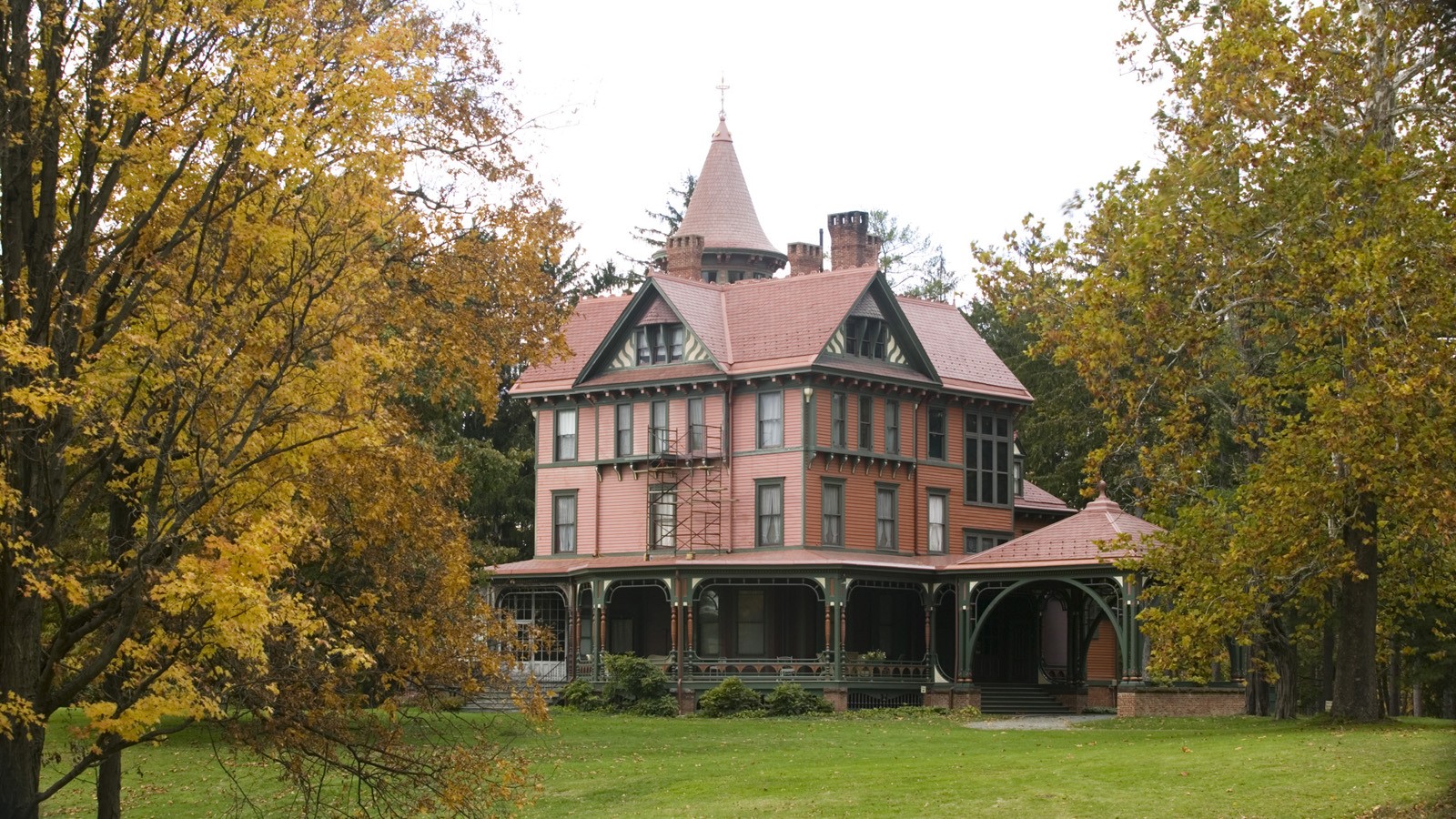
Vaux and Company capitalized on the site’s Picturesque qualities and grand views of the Hudson River and Catskill Mountains with intricate networks of drives and walks. Trails were laid and lined with specimen trees and shrubs. They also sited overlooks with rustic gazebos and sheltered garden seats and an eclectic collection of outbuildings, including the gate lodge, carriage house, and potting shed.
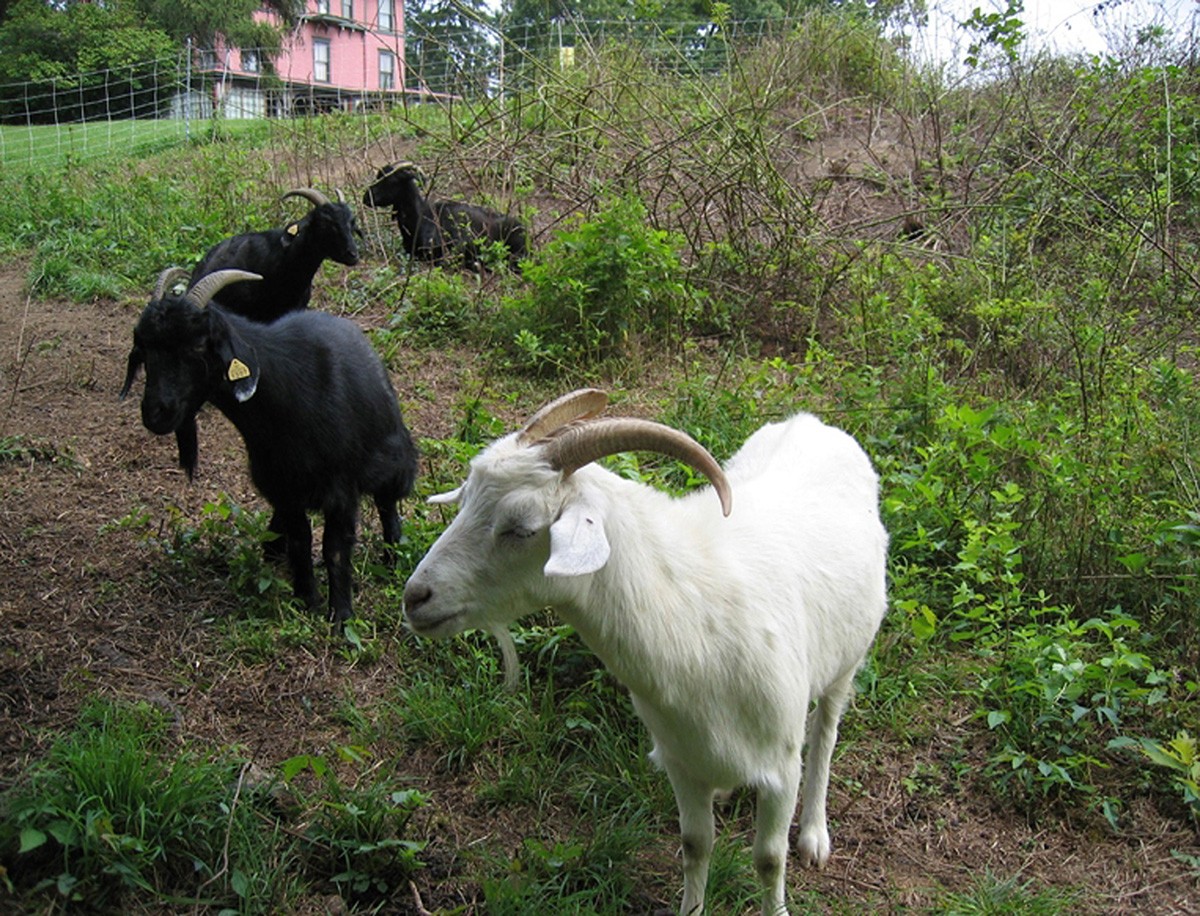
The Suckley family, which came to include six surviving children, continued to occupy Wilderstein, and beginning in the early 1980s, Margaret (Daisy) Lynch Suckley and a group of family and friends formed a non-profit organization aimed at assuring the site’s future. With Vaux and Company’s original plans, including a topographic site inventory of the property as they found it in 1891, Wilderstein Historic Site began securing funding for ongoing operations and undertook several large-scale restoration projects on the house and grounds. The rustic wooded gazebos have been restored—reopening the magnificent views to the Hudson—and efforts continue today, including a goat grazing program, to reclaim the Vaux and Company plan, still nearly intact, from decades of overgrowth.
Wilderstein remained in family ownership until Margaret Suckley’s death, at age 99, in 1991. Today, Wilderstein is an established tourist destination and a contributing property to the Hudson River Historic District, which became a National Historic Landmark in 1990. The site also is home of an extensive decorative arts collection, an important Hudson River Valley archival collection, and active curatorial program. For visitors today, Wilderstein provides an unparalleled view into the world of the oldest families of the Hudson River Valley—and of the daily life of the Suckley family. While many works of landscape architecture reflect far greater changes to topography and landscape character, few are more fully evocative of their era and designers.
Threat
While Wilderstein’s core landscape retains a high degree of integrity, the greater property faces major landscape management challenges. Runoff has etched gullies in the steep southwestern slopes to the river. This, as well as a dense second-growth tree canopy, has exacerbated soil erosion by preventing undergrowth. Periodic flooding and decades of benign neglect have damaged the drainage culverts that protect the road to the river. Treatment will involve both professional engineering and vegetation management solutions.
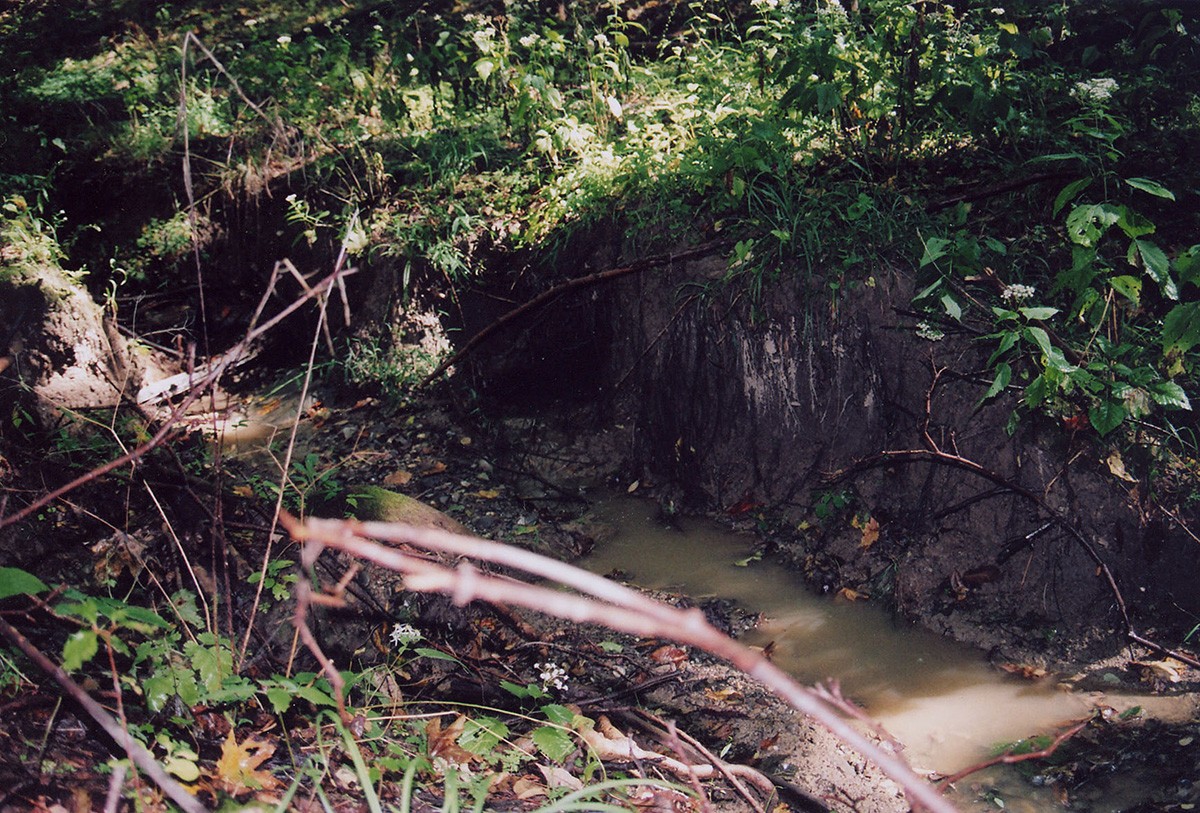
As part of site management activities, individual elements of the Vaux and Company planting plan continue to be restored. Vistas require additional clearance and maintenance. However, many of the historic trees (some of which were mature when Vaux and Company undertook their plans) are now in decline and will require increasing amounts of care. For example, near the location of the Rose Garden, an insect infestation of woolly adelgid has decimated a decorative hedge of Canadian Hemlock (Tsuga canadensis) that now must be replanted. Outbuildings, such as the Carriage House, Ice House, and the Potting Shed, must soon be re-stabilized while funds are raised for their rehabilitation. And there is the hope, also, that Wilderstein will be able to acquire adjoining acreage to serve both for interpretation and as a site buffer: the window of opportunity to obtain this currently undeveloped property may close at any time.
Get Involved
Wilderstein has a knowledgeable staff and a strong group of volunteers involved in planning, fundraising, event coordination, and site restoration and maintenance efforts. However, more help is needed. The public can show support by becoming members, volunteering professional services, or just by visiting the site and telling others to do so themselves.
Learn More
Wilderstein Historic Site
330 Morton Road
Rhinebeck, NY 12572
Print Resources
Philip, Cynthia Owen. Wilderstein and the Suckleys: A Hudson River Legacy. Wilderstein Preservation 2001.
Ward, Geoffery C. Closest Companion: The Unknown Story of the Intimate Friendship Between Franklin Roosevelt and Margaret Suckley. Simon & Schuster,1995, republished 2009.



